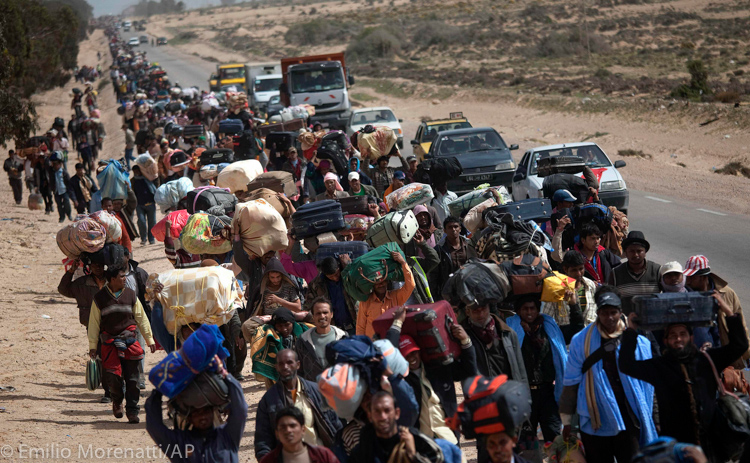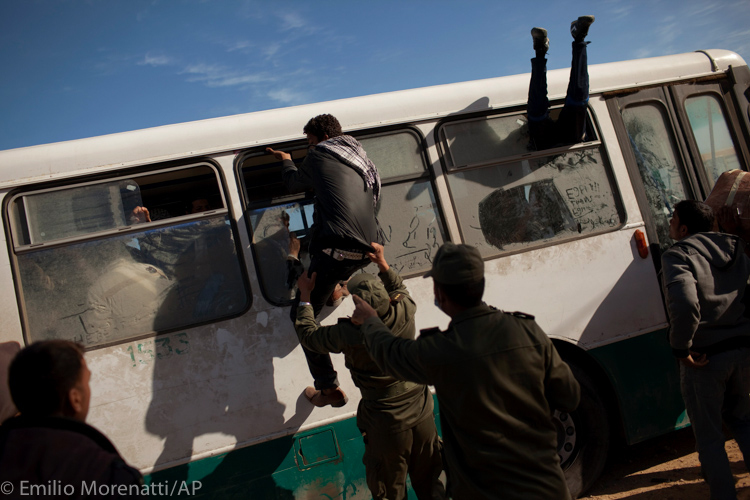Spanish photoreporter Emilio Morenatti is the first recipient of the Lucas Dolega Award, for his story “Displaced In Tunisia”.
The report
More than 250,000 migrant workers people fled fighting in Libya for neighboring countries, primarily Tunisia and Egypt, as the revolution in Libya began.
At the Libya-Tunisia border, thousands spent the night in a 20,000-capacity tent camp, awaiting evacuation. Some of those coming from Libya said they had attempted the journey before but were held back by heavy fighting along the way.
This series of images chronicles these refugees.
Biography
Emilio Morenatti began his career in photojournalism at a local newspaper in Jerez de la Frontera, Spain, while studying to be a draughtsman.
In 1992, he joined Agencia EFE, the leading Spanish news agency, and moved to Sevilla. From there he covered a variety of national and international events, including several Olympic Games and the 2002 Iraq War.
At the end of 2003 he went to Afghanistan as a correspondent for The Associated Press. Based in Kabul, he covered the democratic process in the country after the fall of the Taliban regime. In 2005, AP sent him to cover the Middle East conflict from Gaza and Jerusalem.
In 2006, while covering the conflict in Gaza City, he was kidnapped by gunmen before being released unharmed a day later. He was currently based in Pakistan and covered Central Asia for the Associated Press. He was named 2008 Newspaper Photographer of the Year by Pictures of the Year International.
In 2009, he was one of two Associated Press journalists (and two U.S. soldiers) seriously injured in Afghanistan when their vehicle ran over a bomb planted in the open desert. He lost his left foot in the explosion, and was flown to a hospital in Dubai. He is now based in Barcelona.
Morenatti’s many accolades include prizes in The Fuji European Press Awards 1996 and The National Headliner Awards 2005 and 2006. He has won the large market Photojournalist of the Year award in the 2010 Best of Photojournalism competition, sponsored by the National Press Photographers Association.


